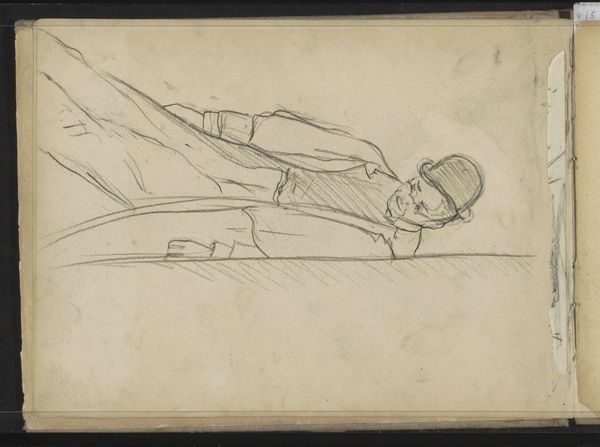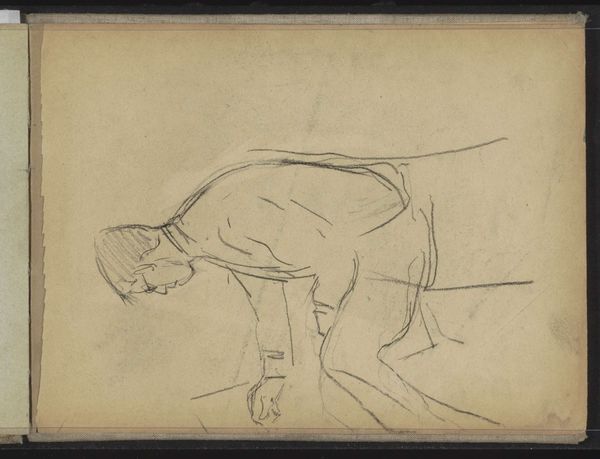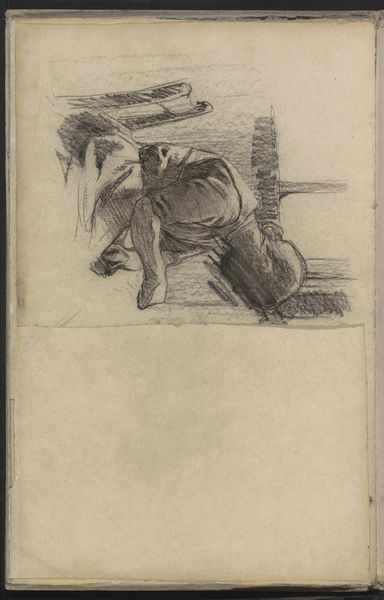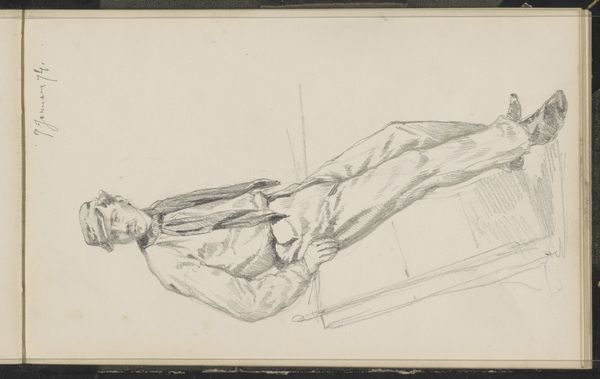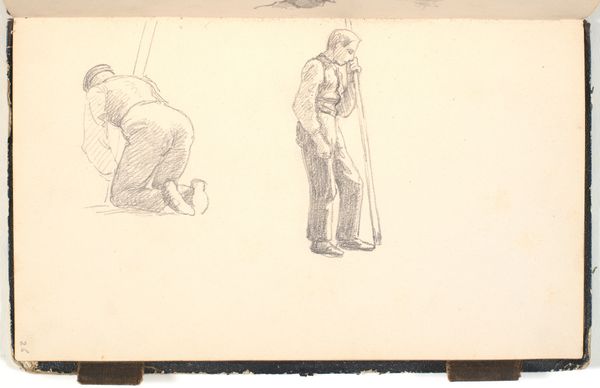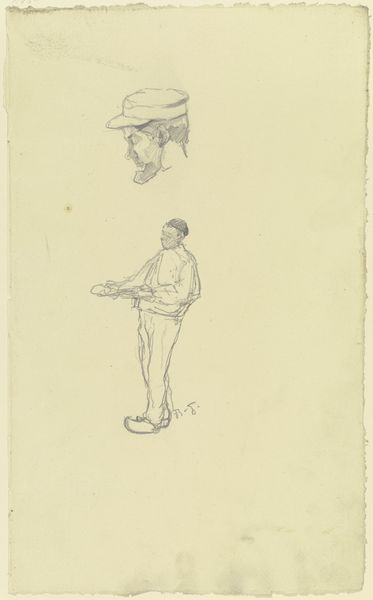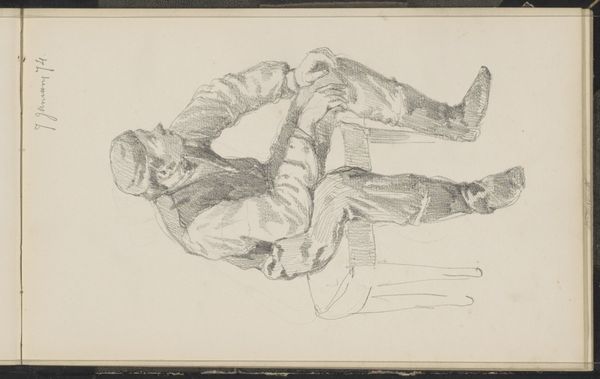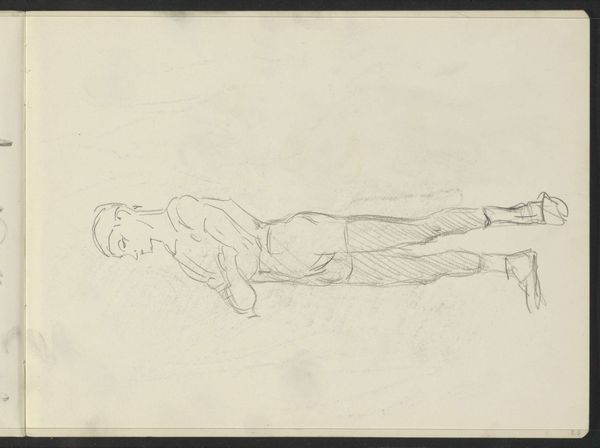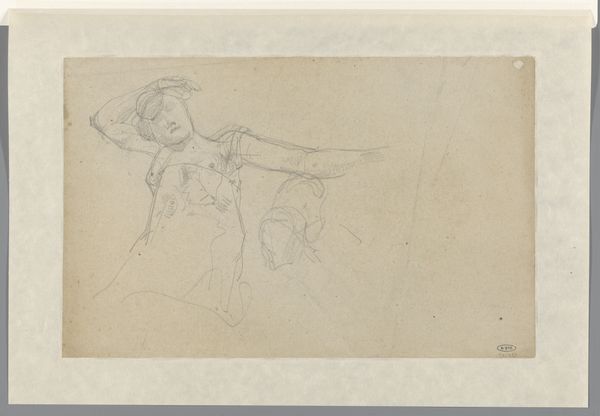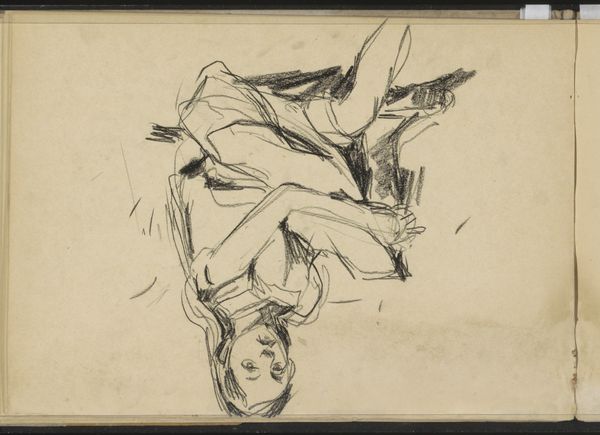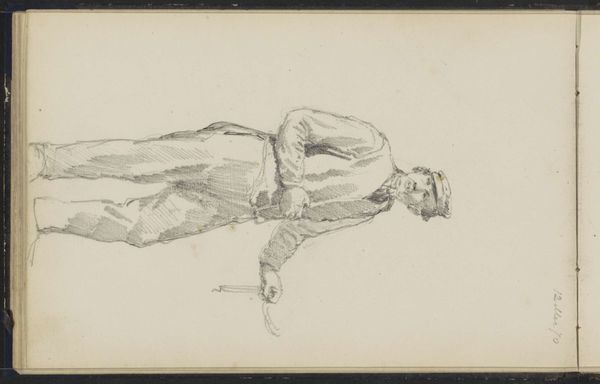
Copyright: Rijks Museum: Open Domain
Curator: Here we have "Man met een hoed liggend op een bank", a drawing from the sketchbook of Johanna van de Kamer, likely created between 1890 and 1922. What strikes you first about this work? Editor: There's a certain melancholic air, don't you think? The downward curve of the mouth, the weight of the head on the hand. The muted tones amplify this mood; the soft graphite barely contrasts with the toned paper it's on, which helps soften any angularity in the figure. Curator: It's interesting that you perceive that melancholic air so directly. The figure’s pose suggests weariness or perhaps simply a moment of reflection. Looking at the material evidence, we see it is a quick sketch—lines laid down economically to capture a fleeting observation. We might ask: What labor was involved in producing this image? Was it a study for a larger project, or merely a personal exploration by Van de Kamer? Editor: Good point about this being from a sketchbook, so most likely quite personal. Looking closely, I’m struck by how the artist uses line to create form, especially how those looser lines suggest the folds of the clothing. Also how little shading is used to model the volumes of the figure; the line is paramount. Semiotically, the hat tells us a lot about this figure’s likely social standing. Curator: Absolutely. Considering the artist's milieu, it prompts us to question the social conditions under which such figures and observations existed. What commentary might she have been making by sketching someone in a posture of repose, seemingly outside of productive labor? Editor: It brings up interesting contrasts—the implied leisure of the subject against the labour involved in creating the work. The composition emphasizes the horizontal—the bench, the reclining figure—which really drives home that feeling of languor I noted initially. Curator: Indeed, that interplay speaks to the complexities of artistic creation and social observation during the period. Ultimately, this unassuming sketch opens a broader exploration of class, labor, and representation in late 19th- and early 20th-century society. Editor: A lot packed into a seemingly simple sketch. Analyzing the artistic qualities, we reveal new ways of understanding what art and the era had to offer us, and perhaps also how that has affected current creative industries and artistic talent.
Comments
No comments
Be the first to comment and join the conversation on the ultimate creative platform.
